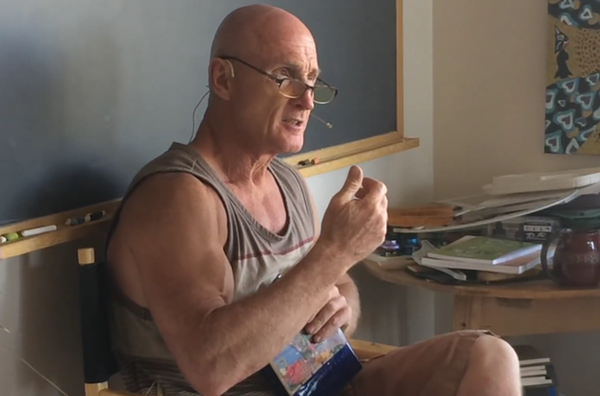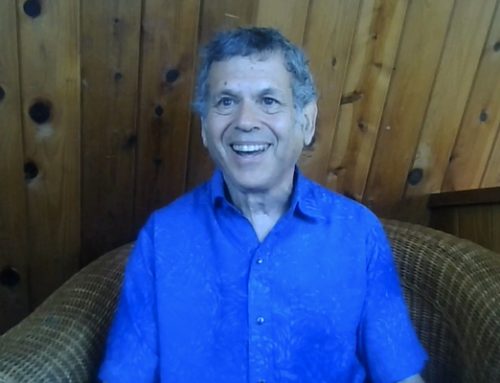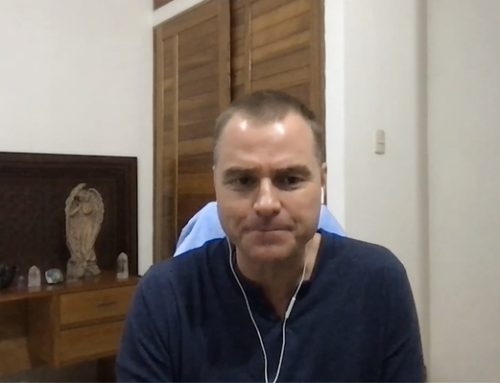
This week’s vlog is a topic some of you have probably heard me discuss on recent podcasts. And if you haven’t, then I recommend you check out my recent one with Alison Pelot and Maja Gottlieb, two very skilled Holistic Lifestyle Coach 3 Practitioners who interviewed me for their Integrate Yourself Podcast.
I was introduced to meditation when I was 12 by my mother, who was a Yogi and a member of the Self-Realization Fellowship.
Since then, I’ve worked with all kinds of practices like tai chi and qi gong. I went to summer camp with the Self-Realization monks and later in life, I did a certification in medical qi gong and studied with Master Fong Hall to learn tai chi.
Then, I came across the teachings of Father Thomas Keating from Ken Wilber, and this led me to James Finley, whose works on Meister Eckhart and Thomas Merton are beautiful.
Through studying these men, I realized that one of my favorite approaches to meditation was what is technically called contemplative meditation. I was very excited about this because that’s one of my favorite things I do all the time, especially on weekends when I have time to chill out and not have a schedule.
I spend much of my “down” time by reading and studying, and some of these authors are so deep and powerful (books by Carl Jung, Joseph Campbell, Fred Allen Watts or Rumi come to mind) that as a guy who really likes to connect to the deeper elements of what’s being shared — not just the words or intellectual concepts, but what’s really happening inside of me — I would find myself in this state of deep contemplation or meditation, a form of thinking without thinking (an action without action) or no mind.
I would find myself drawn into these deep states that I wouldn’t keep track of the time, and before you know it, five minutes, 10 minutes or much longer more had gone by, so deep was I into these meditations.
Contemplative meditation is really fantastic for people who are already quite powerful in the mind, but do not prefer seated meditation where you’re sitting there and just letting your mind relax and go into a state of emptiness. It took me awhile to really get to where I enjoyed doing that form of meditation.
Contemplative meditation is lovely because you can read a book or take notes from a good audio or TV program or a video. Typically, this needs to be something much deeper than just the words themselves, which is why poetry is so good.
If there’s anyone out there who can take you into a contemplative meditative state, it’s Rumi.
A Piece of Wood by Rumi
For this week’s vlog, I had my soul guide me to a short poem, something that would be easy for you to work with from the great book, A Year With Rumi: Daily Readings by Coleman Barks. (I have almost two shelves in my library devoted to Rumi that includes about 60,000 poems and every one of them is mind blowing!)
This poem is called A Piece of Wood.

That’s Rumi for you. There’s a lot going on there in just a few lines. If you haven’t studied Rumi, he’s as deep as deep gets. Of all the masters I’ve studied, if I could be with anybody I would definitely choose Rumi.
He’s just unbelievable and, therefore, extremely believable, but you have to connect to him very deeply or you’ll just confuse the intellect. Rumi will destroy your ego, which is what I think he loves to do.
Using contemplative meditation, take it piece-by-piece because there’s only four lines of poetry here, but they’re very, very powerful if you’re connecting to it. If you try to do that with your intellect, you’re already done. Poetry is created that way because its design is such that the ego can’t tackle it. All of the common sense things you learned in school about grammar and common sense just go out the window here.
Close your eyes, say those words and see what images pop up. I reach for a piece of wood. It turns into a lute. And then say, what is the message Rumi is sharing with us?
Bending the laws of physics

What I see inside myself is this image of Rumi reaching for a piece of wood. Then, when he says it turns into a piece of lute, it turns into a lute. A bunch of things come up, which is what’s part of its beauty.
I see him spending the time almost as a meditation, carving out this musical instrument. Another possibility is that Rumi reached for a piece of wood and inside of him himself, he saw the lute in its completed form. So, he created something beyond the laws of physics.
If you realize that there’s no real right or wrong response but an exploration of your deeper self, then you can state the words almost like a chant. You could add the motion to it, so there’s a kinesthetic awareness.
Right there, these words create a charge in me like magic is happening.
This is a nice technique for meditation, especially for those of you who like philosophy, poetry, spiritual development and honest religion (not corporate religion or dogma).
Sometimes, I paint these things. I let what comes to me and I may sketch it in the meditation so it’s quick and easy, then I will continue the meditation and I will empty myself and let the brush and the art spirit take over. Sometimes, I’m amazed at what comes out. I look at some of these things I’ve painted and I go, “I don’t even know how I did that.” If you would have shown me that picture and said, “Paint this,” I would have probably told you I couldn’t do it.
This is what happens when you get into these deep states of contemplative meditation. It takes you to places and experiences that baffle the conscious ego mind.
Magic and the chakras
For those of you who have powerful minds and have a hard time sitting still, contemplation meditation is a great technique where you can use your mind at a level beyond what you’ve learned in school, beyond the mathematical thinking of a+b=c. It’s beyond logic and rationale.
When you read something like I reach for a piece of wood. It turns into a lute… that suggests magic. So how can you get yourself into this state of open receptivity to magic?
You can look at your hand and think, “Whatever created me is unbelievably, wickedly awesome because the complexity just in my hand is crazy, let alone my body, my brain, my spirit and my capacity to think and feel.”
If you take yourself into that state of harmony, it opens you up a lot. You have to be a bit of a shape shifter too. If you approach it like, “I’m going to read this book and then I’m going to think about it,” you’re likely operating in the bottom three chakras.
If you’re dealing with something as deep as this, you need to get up into your fifth or sixth chakra at least, and that would include the heart in the process.
This is just one example out of thousands I’ve experienced. I’ve sat for countless hours sometimes getting so deep that I was late for things and even forgot things I needed to do like eating.
Resources
If you want to learn more about the inner arts and how to love, care and balance yourself and breathe and move, check out our Holistic Lifestyle Coaching (HLC) program.
HLC 1, available online or in a live setting, teaches you the things you need to master to be authentic. From there, when you get the burning urge to go out and be a holistic lifestyle coach and support other people who are struggling to live their dreams, you can come to HLC 2 and meet one of our phenomenal instructors and be transformed by a meeting of souls.
I hope you’ll enjoy exploring contemplative meditation. I think it’s a great doorway that really gives you a chance to go into “no mind” and experience the beauty that reflects back to you, one that you’re brave, willing and loving enough to create inside yourself.

Love and chi,
Paul






